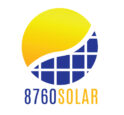
“BIPV” is the buzz acronym for 2024. Short for “building integrated photovoltaics”, it’s a catch-all phrase for anything used in construction that can also transform solar energy into electricity.
For example, solar shingles – a replacement for standard roof tiles – are becoming increasingly common. They look better than placing rectangular solar panels on top of an existing roof and also allow more surface area to capture solar energy.
But the star of the show is soon set to be the transparent solar panel.
First developed at Michigan State University (MSU) in 2014, the technology has since been heavily researched and, by 2020, a fully transparent and fully functional solar panel was achieved.
In 2024, transparent solar panel manufacturers are starting to emerge and we will soon start to see this technology used in place of traditional window panes.
In this article, we explore what a transparent solar panel actually is and how it can benefit our US farming industry.
In a Nutshell
- Fully transparent solar panels were first achieved in 2020 and have an efficiency rate of 1%.
- The technology uses organic salts as the photovoltaic layer.
- Transparent panels capture invisible light, such as UV and infrared wavelengths, and convert it into electricity while allowing visible light to pass through.
- Partially transparent solar panels have a greater efficiency of 7% – 12%.
- Both transparent and partially transparent solar panels have a lifespan of 25 – 30 years.
- As the technology is developed, researchers are confident that fully transparent solar panels can reach over 10% efficiency.
- Tinted translucent solar panels can replace stained glass and create stunning effects in public spaces.
- Orange-tinted translucent solar panels have been found to boost leaf growth on crops like spinach and basil.
- Transparent solar panels pave the way for more efficient and cost-effective greenhouse farming.
What Are Transparent Solar Panels?

Transparent solar panels are exactly what their name suggests. They consist of a see-through material that has the added ability to capture sunlight and transform it into electricity.
This technology is poised to become a complete game-changer in the way we harvest solar energy.
Think about how much of a building consists of windows – particularly office blocks, skyscrapers, and commercial buildings that are almost entirely covered in glass. If this standard glass is replaced with transparent photovoltaic panels, these buildings can become sustainable energy generators.
Transparent solar panels also address a key issue in solar energy and that’s the amount of available space. Suitable land or surfaces upon which to install traditional solar panels – especially in urban areas – is becoming more scarce.
BIPV and transparent solar panels provide a solution that takes up no extra space and provides a dual purpose. Our cities and towns could become so much cleaner if every building could harvest energy through its windowed surfaces.
In rural areas, transparent solar panels can also make a significant positive impact, particularly on agricultural businesses that rely on greenhouses to grow produce. If greenhouses were also solar energy generators, then farms could use that energy to drastically reduce their operational costs.
How Do Transparent Solar Panels Work?
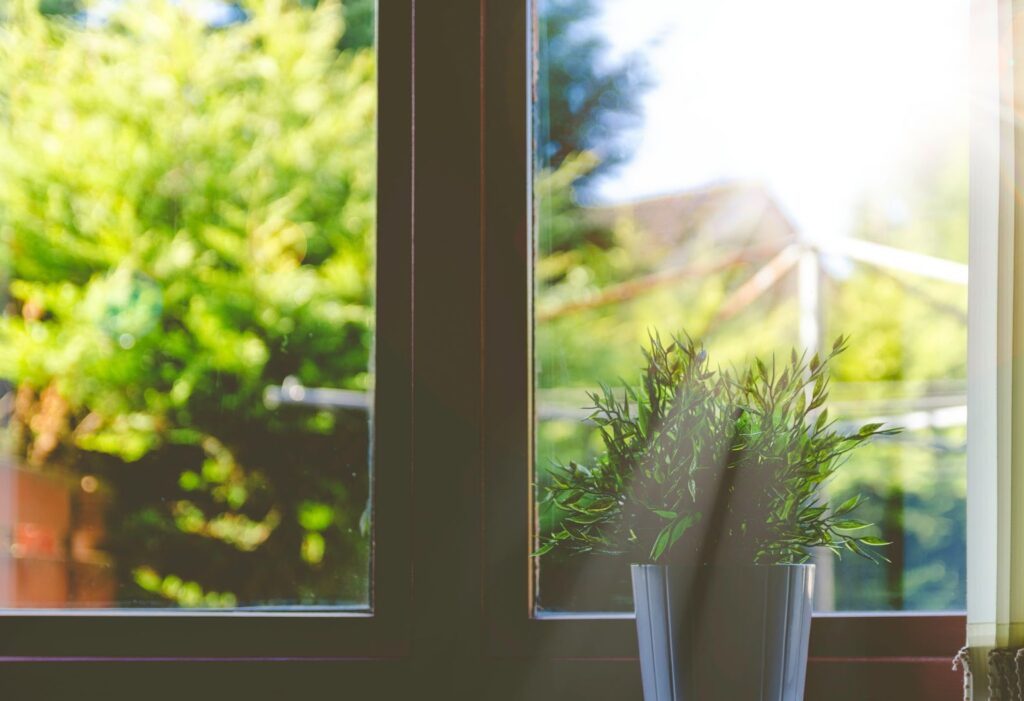
Unlike the traditional dark blue crystalline solar panels, transparent solar panels don’t rely on visible light for energy production. Instead, this technology captures the light that is invisible to the naked eye, namely ultraviolet (UV) and infrared wavelengths, and converts it into electricity.
While this is happening, visible light passes through the panel and illuminates the area beyond, acting, for all intents and purposes, exactly like a standard glass window pane.
Called a transparent luminescent solar concentrator (TLSC), the panel is constructed from tempered glass that’s about 0.10 – 0.27 inches thick and around six times stronger than regular glass.
The photovoltaic layer is fused into the glass and consists of organic salts (complex cyanine derivatives) that absorb the invisible wavelengths of light. The absorbed light is then fed to the edges of the panel where strips of thin photovoltaic cells convert it into electricity.
Because the panels are transparent, they don’t capture as much light as their crystalline counterparts. As a result, they are less efficient and produce less electricity.
On the plus side, they have great lifespans of around 20 – 25 years and are more heat tolerant than crystalline panels, which means they don’t reduce in efficiency during hot days.
Types of Transparent Solar Panels
Fully Transparent Solar Panels
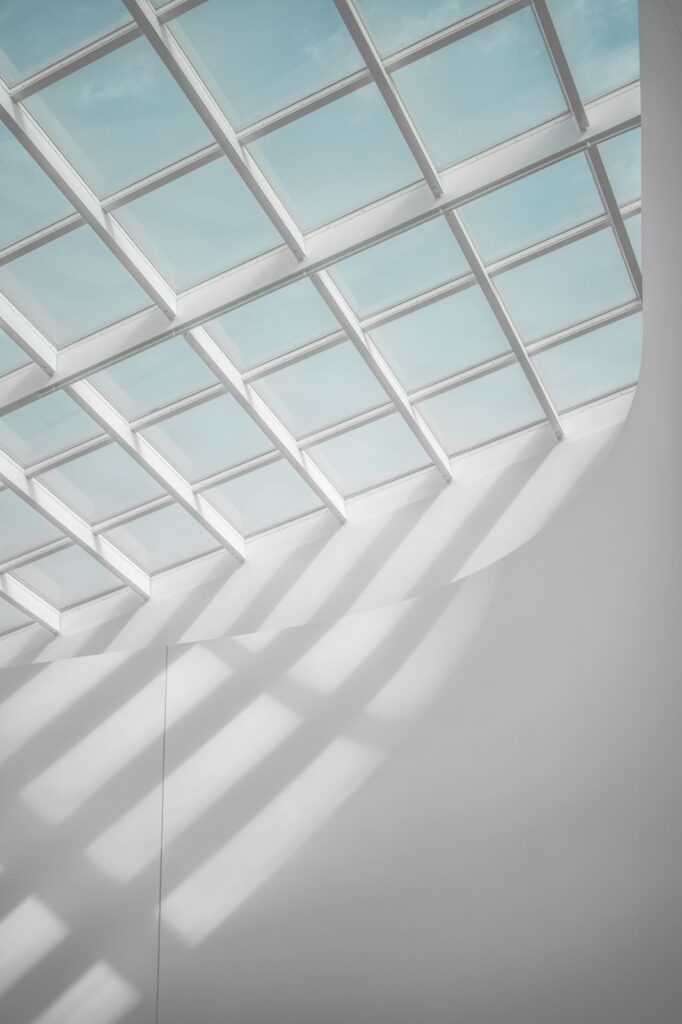
Solar panels that are fully transparent offer the most versatility since they can be used as window replacements and don’t hinder the passage of visible light.
These crystal-clear panels resemble standard glass in just about every way. If you were looking through a window that consisted of TLSC, you wouldn’t notice any difference.
The drawback of fully transparent solar panels is their reduced efficiency, which currently stands at around 1%. In contrast, a crystalline solar panel achieves 15% – 20% efficiency.
However, plenty of research is being done in this area. Bear in mind that full transparency for solar glass was only achieved in 2020. Therefore, this is a brand-new technology that still requires development.
That being said, the future looks bright. Researchers at MSU and MIT believe that it won’t be long before an efficiency rate of around 12% is achieved.
While this is still lower than crystalline solar panels, it’s important to consider the scale at which this technology can be deployed. If we converted all our standard windows to photovoltaic ones, it would make a significant contribution toward meeting the USA’s energy requirement.
Partially Transparent Solar Panels

Partially transparent or translucent solar panels have a greater efficiency than fully transparent panels as they have a more reflective surface and can, therefore, capture more light.
Presently, partially transparent panels can capture about 60% of the light that passes through them and can have an efficiency rate of between 7% – 12%.
This technology is just as valuable as fully transparent panels as it protects from direct sunlight. For example, glass buildings already use window tints and reflective coatings to keep interiors cooler. Partially transparent solar panels can do the same job while simultaneously producing electricity.
Tinted Translucent Solar Panels

Traditionally, solar panels have only been available in blue or an inky black color, but transparent solar panels offer up an almost endless choice of tints since the material can be produced in just about any color that is desired.
For example, the Marjan van Aubel studio designed stained glass-style photovoltaic windows that formed part of the Dutch pavilion at Expo 2020 Dubai. This has opened up practical yet creative – and beautiful – possibilities that can transform our spaces for the better.
Tinted solar panels also have the surprising potential to boost farm production. Researchers at the University of Greenwich and Cambridge have experimented with greenhouses constructed with orange-tinted translucent solar panels and the results have been extremely promising.
The panels absorb the blue and green light wavelengths and allow the red and orange ones to pass through the greenhouse and onto the crops.
The orange hues were found to be highly beneficial for leafy crops, such as spinach and herbs, and prompted the plants to grow larger leaves. When the value of the crop and electricity produced were combined, spinach’s profit margin was 35% higher.
This exciting research can pave the way for farmers to produce better quality and higher yields while simultaneously reducing operating costs through self-produced electricity.
The Pros and Cons of Transparent Solar Panels

There’s no doubt that transparent solar panels can have a massively positive impact on the way we harvest and produce energy. However, there are still some downsides that we feel are important to highlight.
Pros
First, the good stuff:
- A practical solution for urban and population-dense areas where it may not be possible to install traditional solar panels.
- Solar glass provides a dual function, which is an efficient use of resources and allows every building to potentially become energy-independent.
- The technology can be used for mobile electronic devices – notably electric vehicles – which can incorporate transparent panels to be recharged on an ongoing basis.
- Tinted solar greenhouses can boost crop health and yields.
- Solar windows are more aesthetically pleasing than traditional solar panels and can cover more surface area.
- Transparent solar panels don’t need to be positioned to face the sun directly, therefore, they are more versatile in where they are placed.
- The panels have great longevity and are more heat tolerant than crystalline solar panels.
- When combined with rooftop and ground-mounted solar, this technology has the potential to meet most of the USA’s total energy requirements.
Cons
Now, the not-so-good stuff:
- This is a brand-new technology. Therefore, it’s not yet widely available and manufacturers are few and far between.
- The cost of manufacturing fully transparent solar panels is currently high. Right now, a fully transparent panel costs around $400 per 10.7 square feet. However, semi-transparent panels are a lot more competitive at around $80 for the same surface area.
- The efficiency rates are presently much lower than traditional solar panels, with 1% efficiency for fully transparent panels and between 7% and 12% for partially transparent panels respectively.
How Transparent Solar Panels Can Benefit Farmers in the USA
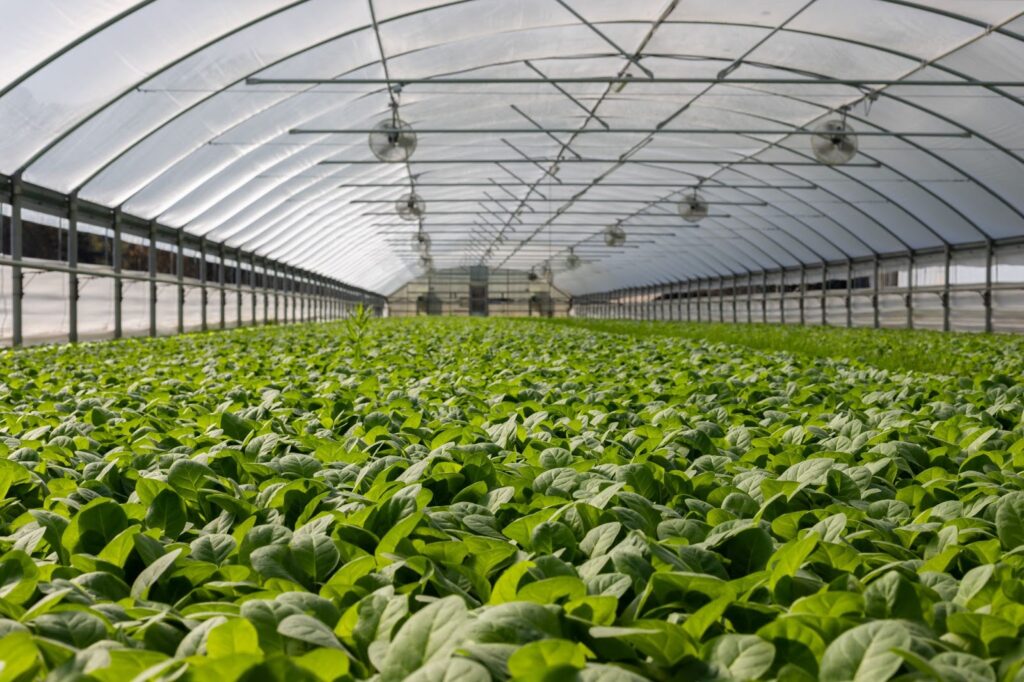
With rising energy and operational costs and the mounting challenges created by climate change, it’s little wonder that farmers around the USA are increasingly searching for ways to make their businesses more economically viable.
Solar energy presents a unique opportunity since it has the potential to create energy independence for many US-based agricultural businesses. Transparent and semi-transparent solar panels take things one step further and provide a dual benefit.
When farming activities and solar panels coexist, it’s called “agrivoltaics.” Agrivoltaics comes in many shapes and forms. For example, the shade created by solar panels mounted in fields provides vital shade for sensitive crops or for livestock to graze. Vegetation grown beneath solar panels also provides essential flora for pollinators to thrive.
In all, agrivoltaics is a mutually beneficial situation between plant and farmer that is widely practiced across Europe and is now beginning to gain traction in the USA.
There are almost 9,000 greenhouse-based farms across the USA and each plays a vital role in our food supply.
Growing everything from fruit to leafy greens and salad vegetables, greenhouses ensure year-round availability of crops that would otherwise be seasonal. But greenhouse farming requires a controlled environment of temperature and humidity and, to achieve this, a lot of electricity is required.
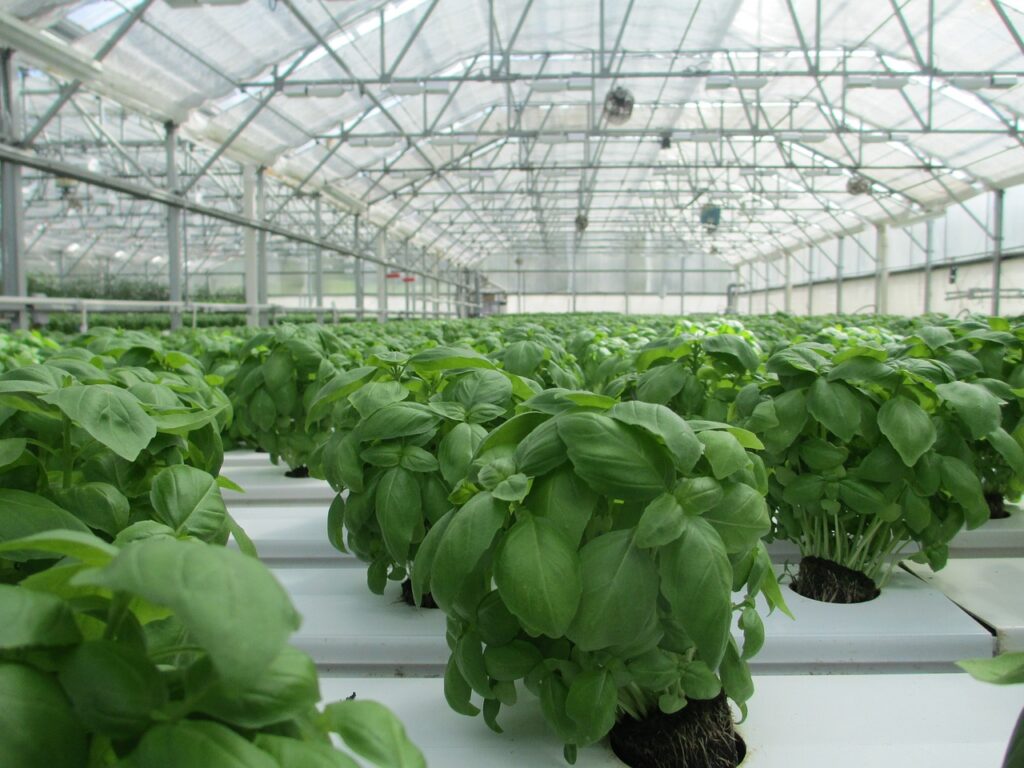
By switching to greenhouses constructed of transparent or semi-transparent solar panels, greenhouse farmers can continue growing their crops while generating the electricity required to run the greenhouses efficiently.
Additionally, and as demonstrated in our earlier example, partially transparent and tinted panels can even boost crop health and yields and make a farm more profitable.
The obvious challenge right now is the upfront cost of installing photovoltaic glass, but we expect the cost of this to reduce in the coming years. With the REAP grant and other government tax incentives available for going solar, it may be more affordable than expected to switch to solar energy.
Choose 8760 Solar for Your Colorado-Based Farm

If you run a farm or agricultural business in Colorado or the surrounding states and are keen to switch to solar energy, then we welcome you to get in touch.
At 8760 Solar, we specialize in providing solar solutions for farmers. Our founders come from a farming background, and our team is experienced and knowledgeable about the unique energy needs and challenges that farmers face.
We employ cutting-edge technology to complete a full analysis of your business operations. This will help us determine the best type of solar installation for your needs and provide you with an accurate quote.
We even help you take full advantage of all the financial incentives that are available for going solar.
If you’re ready to talk then let us know by texting “READY” to 719 470-0254 or emailing us at sales@8760solar.com. We’re looking forward to meeting you.
Frequently Asked Questions
Do Transparent Solar Panels Exist?
Transparent solar panels do exist and were first developed in Michigan in 2014. However, they are not yet widely commercially available, although we will start to see them being more frequently incorporated into construction projects in the coming years.
What Are the Disadvantages of Transparent Solar Panels?
The two key disadvantages of transparent solar panels are their reduced efficiency (less than 10%) compared with standard crystalline solar panels and the increased cost of producing them.
Which Companies Make Transparent Solar Panels?
Several companies now manufacture transparent solar panels. Heliatek is a Germany-based leading manufacturer. Brite, Onyx Solar, and Ubiquitous Energy are three leading US-based manufacturers of transparent solar panels.
What Is the Lifespan of a Transparent Solar Panel?
The lifespan of a transparent solar panel is around 20 -25 years. After this – much like a traditional crystalline solar panel – it starts to gradually degrade in efficiency.
